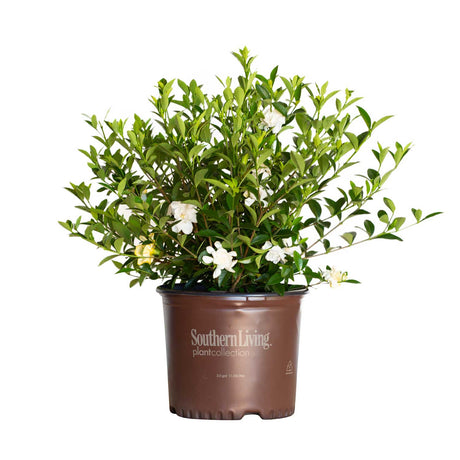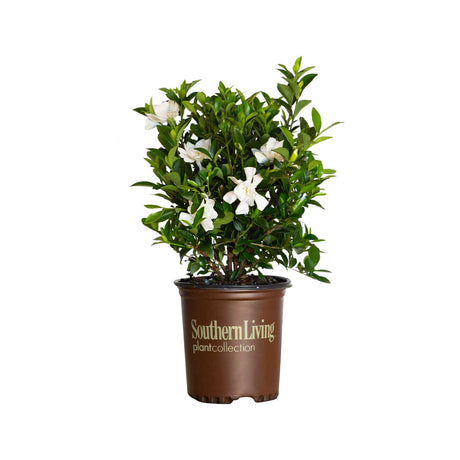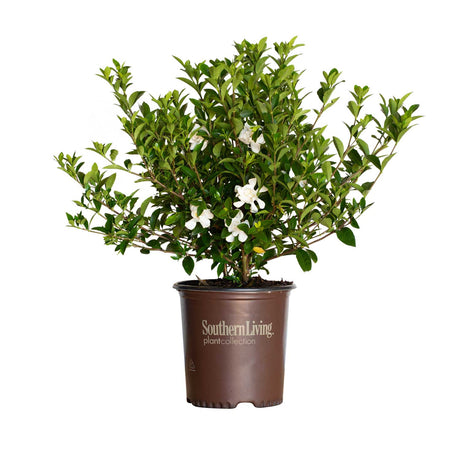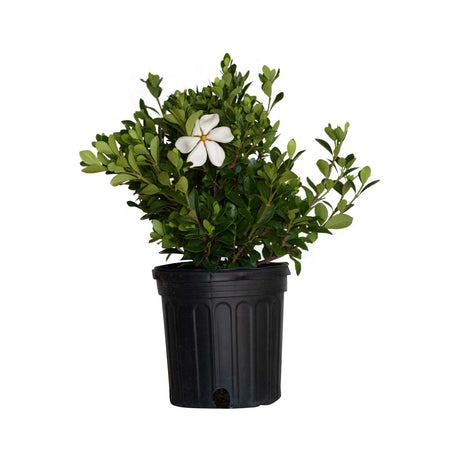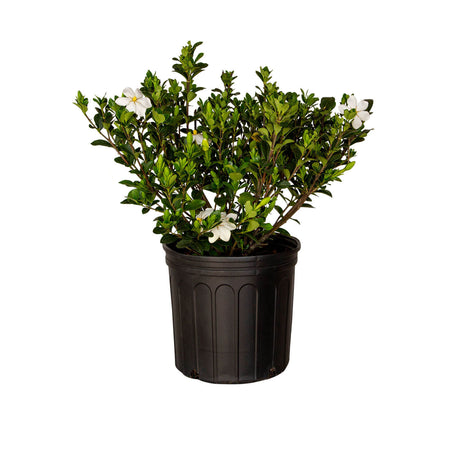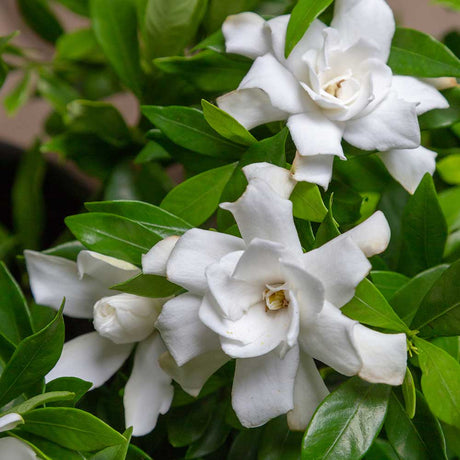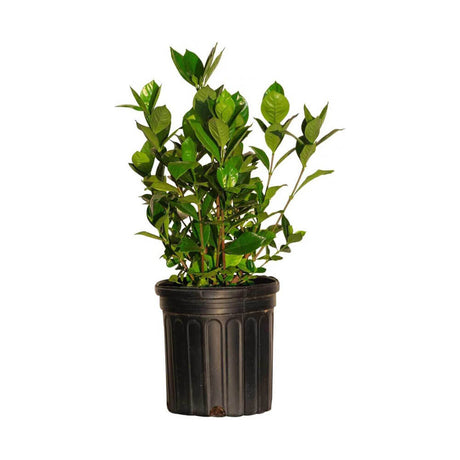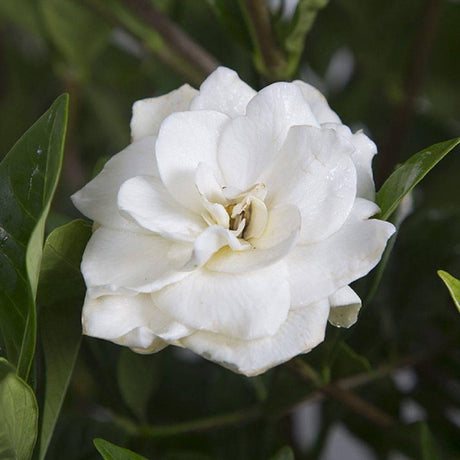FiltersFilter & Sort
Southern Living Plant Collection
From $21.99Unit price /UnavailableIn stock (1530)- Up to 14% off
Southern Living Plant Collection
From $17.99$19.99Unit price /UnavailableIn stock (1246) - Up to 43% off
Southern Living Plant Collection
From $20.98$36.98Unit price /UnavailableIn stock (424) - Sold out
PlantsbyMail is your one-stop shop to buy gardenia shrubs online. We offer the hottest new selections on the market today as well as numerous classic varieties that gardeners know and love!
Gardenia History
Gardenias are originally from the tropical and sub-tropical regions of Africa and Asia. Believe it or not, they're in the same family as Coffee bean plants. Their name comes from Dr. Alexander Garden, an 18th-century Scottish-American botanist from Charleston, South Carolina. His close friend John Ellis first cataloged the plant and named it after him. Dr. Garden later planted the first Gardenia in the United States in 1762. These beauties embody purity and sweetness. They're said to create joy, and it's hard to disagree when that familiar scent hits you. Along with Camellias and Azaleas, they're a classically Southern plant. Southerners have strategically mixed Camellias, Azaleas, and Gardenias in their landscapes for generations to provide blooms in Spring, Summer, Fall, and Winter!Why Should I Grow Gardenias?
This may be self-explanatory for those that are already in the know on these beauties, but if you're on the fence, here are a few reasons.Reblooming Shrubs
Gardenias bloom in late spring or early summer with a huge bounty of flowers. However, after the first display, most varieties will continue to rebloom periodically with less plentiful yields of fragrant blossoms.There's one for every landscape
These guys come in all kinds of shapes and sizes. There are low-growing varieties, large screening selections, and almost everywhere in between. Chances are you'll find one that fits your garden perfectly.They have some of the most fragrant flowers around
Almost everyone knows the scent of a Gardenia. And if you think you don't know it, just give one a sniff and you'll probably remember that you do actually know it. The fragrance is rich and balmy, comforting and sweet. It might just take you back to warm summer nights chasing fireflies and sitting on porch swings.What Type of Gardenia Should I Buy?
All types tend to have the same growing requirements, so the main question you'll need to ask yourself is "What do I want my Gardenia to do?"- If you're looking for a low-growing, spreading variety, the Radicans Gardenia is probably the variety for you. It reaches only 1-2 feet tall! It's a fantastic foreground plant and it's great for mixed garden beds.
- If you're thinking more along the lines of a dwarf variety that reaches 3-4 feet tall, take a look at the Jubilation Gardenia and Scentamazing Gardenia. Both of these varieties are from the Southern Living Plant Collection and were specifically bred for their reliable growth habit and exceptional, fragrant flowers. For an eye-catching evergreen display, pair either of them with another Southern Living Plant Collection selection, the Sunshine Ligustrum.
- If you're thinking "large and in-charge," go for either the August Beauty Gardenia or Frost Proof Gardenia. Both of these varieties get 5+ feet tall but they do it very differently. The August Beauty has large bright green leaves and a moderate to quick growth habit. The Frost Proof has thin but plentiful dark green leaves and a slow growth rate. The Frost Proof is the more cold-hardy of the two (as you might guess), but it's not literally "frost-proof." The name refers to its ability to withstand late-season freezes that would normally destroy flower buds.
Where Should I Plant Them?
The planting requirements are pretty consistent for all varieties in this group. They need at least 4 hours of direct sun exposure to grow and flower properly. All-day direct sun works well in cooler zones. In USDA Zones 9 & 10, 4-6 hours of direct sun is ideal. All-day sun is doable in these warmer zones, however, they will need extra attention to ensure that they aren't drying out rapidly during the summer. Acidic soil with good drainage is ideal, but a neutral pH works as well. Alkaline soil often leads to a mineral deficiency that results in leaves yellowing and dropping (some light yellowing and leaf drop is not unusual in fall and early winter).When is the Best Time to Plant Gardenia Shrubs?
Fall and Spring are generally the best times to plant. Both times have their advantages, but gardeners can plant during either season.USDA Zones 8b-11b:
Fall is preferable in these areas because winters are usually milder and it gives the plant more time to establish itself before summer.USDA Zones 8a and below:
Spring is a slightly more strategic time to plant. It allows your plant to situate itself before winter. We do recommend providing coverage for your plant during its first winter in your landscape though. This primarily entails covering your plant with a freeze-cloth, tarp, or blanket overnight during hard freezes. It will be less vulnerable to freezes in its second winter.How to Plant:
- First, find a suitable location based on the variety that you choose and its planting requirements.
- Then, dig a hole roughly 3 times as wide as the root ball of your plant.
- The hole should be deep enough that the top of your plant's root ball sits even with or slightly above the soil around it.
- Mix your native soil with some good quality garden soil, peat, or composted manure.
- Place your plant in the hole and fill in around it with the soil mixture.
- Next, apply 3-4 inches of mulch around the base of your plant to help protect the roots from extreme temperature fluctuation and help it retain water.
- Gardenias are known for having temperature-sensitive roots, so mulch is a good idea.
- Lastly, water your plant deeply to settle the soil and mulch, as well as hydrate your plant.

